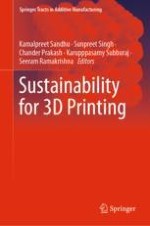2022 | OriginalPaper | Chapter
8. An Optimal Utilization of Waste Materials in Concrete to Enhance the Strength Property: An Experimental Approach and Possibility of 3D Printing Technology
Author : Meyyappan Palaniappan
Published in: Sustainability for 3D Printing
Publisher: Springer International Publishing
Activate our intelligent search to find suitable subject content or patents.
Select sections of text to find matching patents with Artificial Intelligence. powered by
Select sections of text to find additional relevant content using AI-assisted search. powered by
